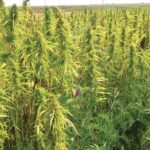
Tag Archives Agronomy

Forget cost per acre — what’s it cost to grow a bushel?
Cost is often expressed as dollars per acre, but farm management specialist Darren Bond says it makes more sense to think of cost in terms of product produced

How to grow 70 bushel canola
Manitoba Ag Days speaker has a tip for growers looking to get the most out of their canola yields.

Monsanto highlights research pipeline for canola, soybeans
Xtend soybeans with added glufosinate tolerance isn’t far off, but glyphosate- and dicamba-tolerant canola is still five or six years out
Editorial: Future farms

Mixing and matching intercrops with WADO
Results are in on last year's Westman Agricultural Diversification Organization’s intercrop trials

This spring be wheat variety aware
CWRS and CPSR wheats you seed in the spring could be in the CNHR class when you combine them in the fall

Better soil health could capture more carbon
A recent study says changing farming practices could capture as much carbon as the global transport sector emits

Opinion: Are U.S. soybean exports meeting market expectations?

Researchers break the wild-domestic barrier in legumes
They’re hoping to tap wild relatives for important traits such as disease and pest resistance

USDA report surprises oilseed market
Traders were expecting a lower yield number and when they didn’t get it, they reacted


